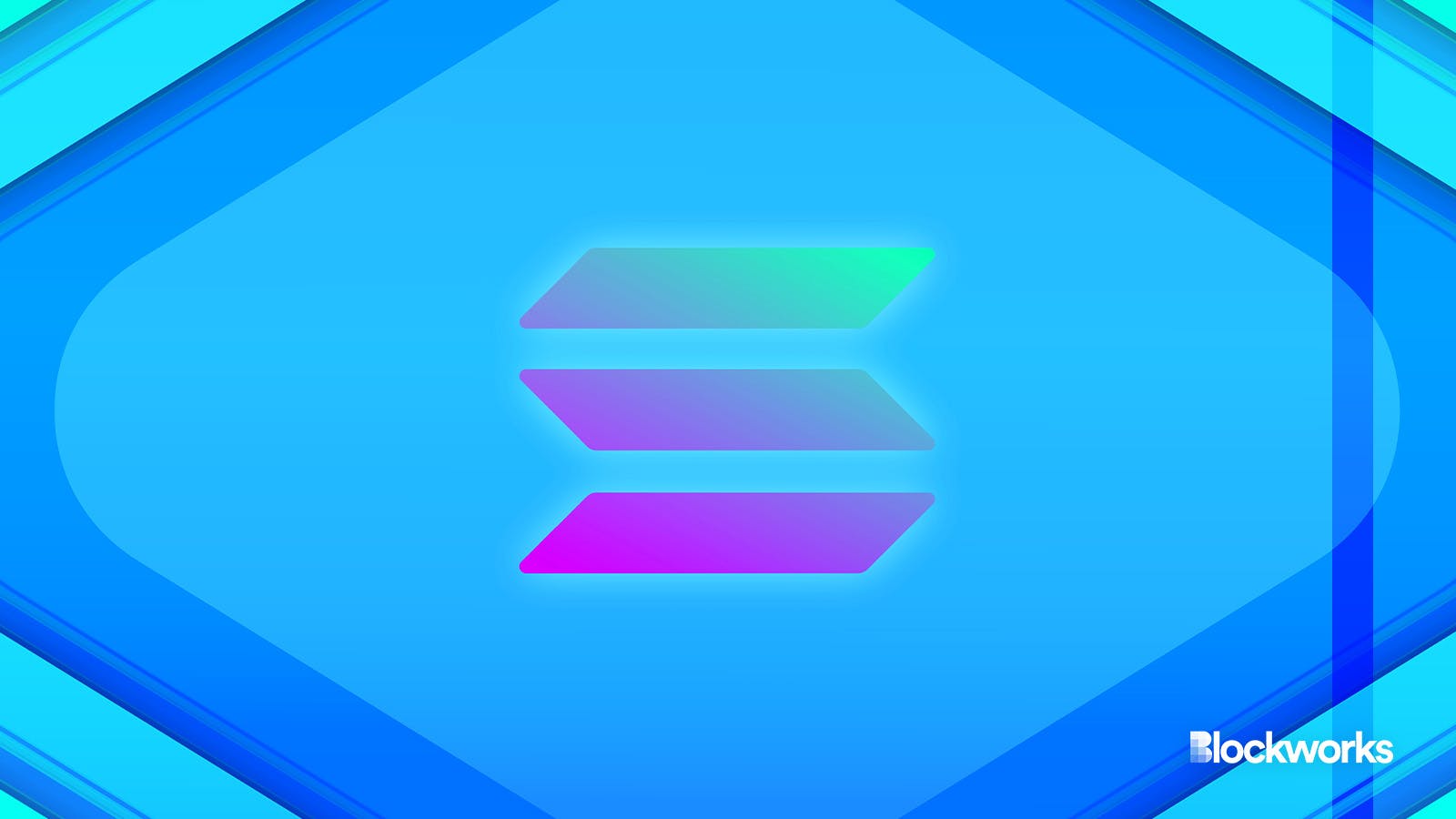DePin projects have gained momentum on Solana blockchain
Blockchain technology is being used to incentivize community building in the real world

Akif CUBUK/Shutterstock modified by Blockworks
Decentralized Physical Infrastructure (DePIN) is utilizing blockchain technology to enable users to take ownership of their data.
Tokens incentivize users to provide services in the real world using physical infrastructure and systems. A popular example of a DePIN project today is Helium, a decentralized wireless network.
According to Scott Sigel, the chief operating officer of the Helium Foundation, anybody can buy a helium-compatible gateway — which is similar to a traditional WiFi hotspot in everyday homes — and install it around their properties or in commercial spaces.
Read more: Unlimited Helium Mobile cell plan goes nationwide for $20 a month
Once installed, these hotspots will enable community members to access wireless coverage in their neighborhoods or general vicinity. Those who provide the hotspot themselves will also be rewarded with tokens that they can cash out.
“The economics of building out an IoT network has been historically difficult, and a lot of centralized providers have gone bankrupt in the process,” Sigel said.
Sigel explains that Helium started 10 years ago and quickly realized that it was extremely expensive, from a centralized point of view, to maintain the cost of real estate and install networks while building out its IoT network.
“This is something that is the core to DePIN, which is how do you coordinate work in the physical world, and leverage a community to create physical infrastructure?” he said.
In 2019, Helium launched its decentralized wireless network and quickly grew its coverage worldwide. According to the Helium Explorer, there are currently 392,090 hotspots around the world.
Read more: Helium hotspots go live in bid to turn Miami network profitable
Sigel notes that cellular users, regardless of which network they use, are at the mercy of large telecommunications companies who determine where coverage will be deployed. With Helium, individuals and small businesses have agency to resolve the issue.
“My favorite example is — there’s a company in Portugal where Helium IoT coverage is very dense, and they were in talks with the city of Porto about doing early flood detection, the fact they were able to build businesses and provide a solution to the city, completely relying on the coverage that was built by the helium community and people in Porto, speaks to the success of the business running entirely on community hosted infrastructure,” Sigel said.
Helium currently runs on the Solana blockchain, a decision Sigel noted was made due to the network’s performant nature, which could handle high throughput and the large developer ecosystem.
Read more: Helium token holders approve switch to Solana blockchain
“The speed performance of Solana, coupled with their principles around intuitive frontend, were just some of the things that overlapped and made sense for us. This is something that ran through a community vote,” he said.
Apart from Helium, another DePIN project being built on Solana and is gaining interest is Hivemapper, which wants to reshape the mapping industry completely.
According to Gabe Nelson, the head of operations and marketing at Hivemapper, the company’s founder and CEO, Ariel Seidman, had worked in the maps industry for over 20 years. During this time, a large problem that Seidman was hoping to resolve was to look into ways to create maps in a cost-effective, scalable way.
The current process of mapping roads requires street view vehicles with sensors to drive around each and every street, which is both labor and capital-intensive, creating an enormous barrier to entry into the mapping market.
“Crypto tokens were a way to align the incentives of a big community to build something collectively and bootstrap it to the scale that it needs to reach to compete with existing infrastructure incumbents,” Nelson said. “I’m not aware of any other financial system that would offer this kind of functionality.”
According to the Hivemapper Explorer, there are currently over 130,000 contributors across 3,253 regions. Over 11,231,955 kilometers have been mapped, marking around 19% of the total globe so far.
Updated April 25, 2024 at 12 pm ET: Clarified to emphasize that Helium is a decentralized wireless network, not a decentralized cellular network.
Get the news in your inbox. Explore Blockworks newsletters:
- The Breakdown: Decoding crypto and the markets. Daily.
- 0xResearch: Alpha in your inbox. Think like an analyst.






